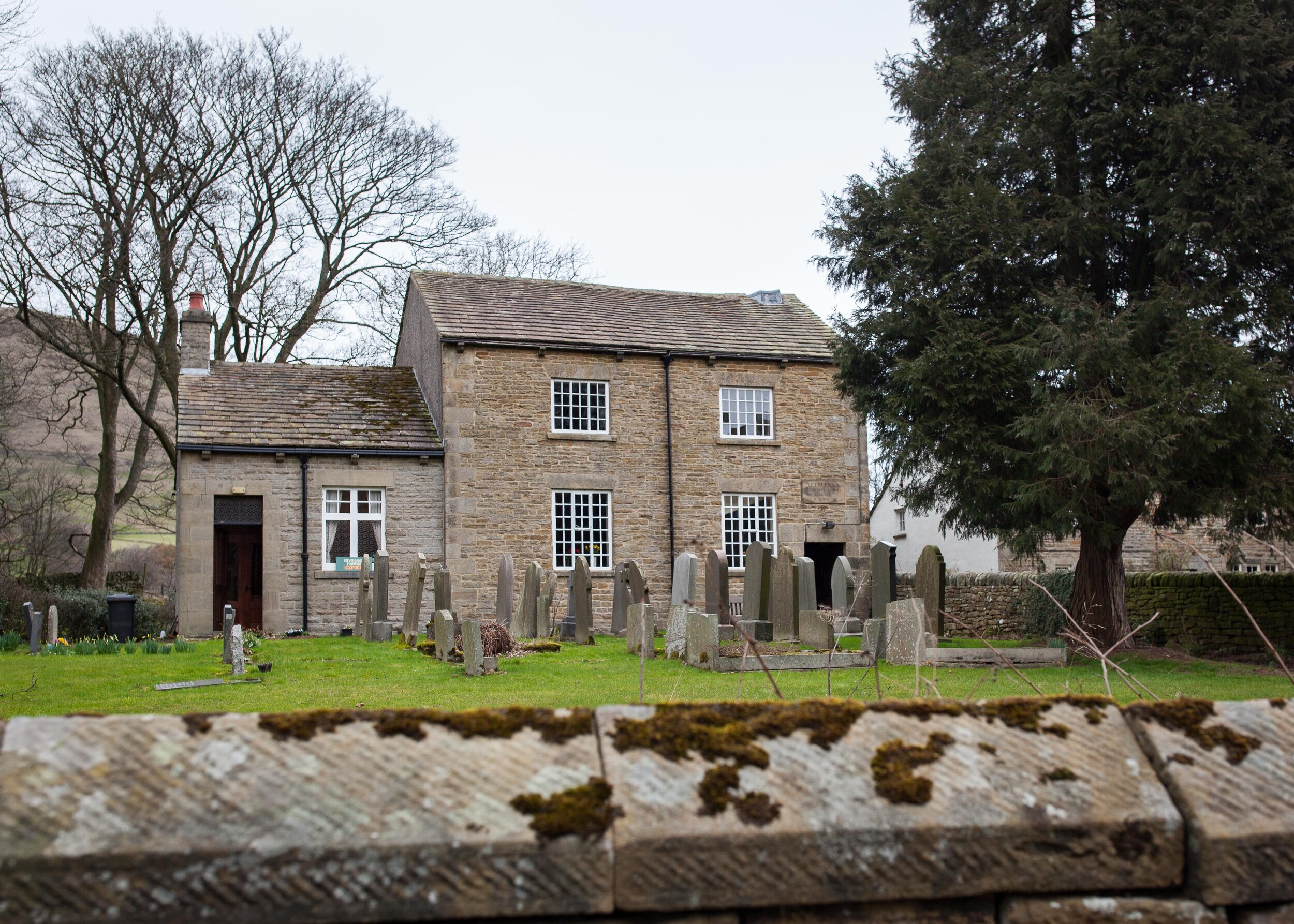The History of the Chapel
Edale Methodist Chapel is sited in Barber Booth. This is a small hamlet in the Edale Valley believed to date back to the 13th Century as a small cattle farming area. Built in 1811, the chapel was close to major cross-Pennine packhorse routes, used since Roman times for carriage of goods, including salt and later cotton, between Cheshire and Yorkshire through the valley. The packhorses also brought corn and then cotton to and from Edale Mill (est. 1785), before the railway was built in 1893. On the 37-mile journey between Manchester and Sheffield, Edale was a recognised resting point before and after the high moorlands, with facilities for both horses and their ‘Jaggers’ (drivers).
The chapel has served the Barber Booth and wider Edale community for over 200 years. Although it has always been a small resident community, numbers in Barber Booth increased hugely during the years of building the Cowburn railway tunnel in the late 19th Century, and during both World Wars when the valley played host to large military camps.
Edale Methodist Chapel is one of seventeen chapels in the Peak Circuit. There has never been a resident Minister at the chapel, but it has always been an important place of gathering and worship, particularly for the hill farming families who have farmed the valley for generations.
How Methodism Came to Edale
The story of how Methodism got a foothold in Edale can be found hanging inside the chapel (pictured left).
“In 1750, when David Taylor was travelling late at night through these hills in a blinding snowstorm, fatigued and almost perishing, he and a companion reached a solitary house, knocked on the door, walked in, after shaking the snow off their clothes. Thinking the strangers were influenced by evil intentions, the good man of the house, John Hadfield, reached down his sword which hung over the mantlepiece with other armour which had been used by him in the Battle of Preston Pans a few years before.
But his fears were soon dispelled when David Taylor, stepping up to him exclaimed, ‘Peace be to this house’. Methodist services commenced in that house forthwith, and a Society formed of which John Hadfield was the first member.
In that house at Barber Booth James Ridal, a travelling preacher, was born and a farmstead across the valley us the birthplace of Daniel Eyre and Peter Eyre. Both became Weslyan Ministers. The house has since been pulled down but the chapel built in 1811 stands close by.”
It is not know whether Rev. John Wesley ever came to Edale, although records show he preached in the High Peak at Bradwell (7 miles away on today’s roads, but less over fields) on 23rd March 1765. Also at Eyam Woodlands in 1766.
The Chapel Building
The chapel is a simple building, believed to have been constructed from local stone. The front elevation is faced with course sandstone blockwork running to gritstone quoins. The walls are some 20” thick. Considering the chapel building is now over 200 years old, from the front it is remarkable for its condition. The main chapel is the two-storey building to the right, and the smaller single-storey building on the left is the old school room, currently used as a showroom by a local cabinet maker, Steve Pickstone.
The graveyard is in a good state of repair and contains the headstones of past generations of farming families, many of whom still live in Edale. The stone marker above the main door says “Wesleyan Methodist Chapel AD MDCCCXI”.
Enter the building and you’ll see that little has changed over the past two centuries. There are varnished wooden pews on both sides, with a single central aisle leading to the front. The balcony above is supported by two pillars. Most of the chapel pews are boxed in with hinged doors. The worship area at the front is a raised and partially enclosed space, with one large organ (not in working order) and a smaller harmonium. Our very fit organist cycles to the chapel to warm up his legs, in order to peddle the harmonium to play the hymns! To the left of the organ is a small table top lectern, inscribed with the date 1837.




